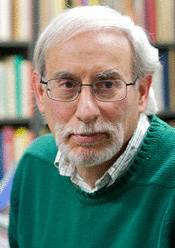This special section marks an important but troubling anniversary in US history, the arrival in October 1619 of 20 unfree African laborers who were brought as indentured servants. By the 1660s indentured servants were displaced and numerically overwhelmed by African slaves, who over the next two centuries helped build the US economy through the institution of chattel slavery.
The six contributions to this section take on the challenge of making sense of the 400 years since October 1619 by exploring how slavery and its continuing legacies have shaped US medicine and public health, especially with regard to persisting racial biases and health disparities that show improvement over time but refuse to disappear. The authors of these contributions are a mix of outstanding older and younger scholars, mostly historians, who have probed the legacies of slavery at various critical moments up to the present. Their analyses are alert to the roles played by overt racial ideology and covert biases, first in providing a justification for slavery, second in rationalizing horrific conditions of labor, third in exploiting the power White physicians exercised over Black bodies, and finally in creating an intellectual framework of essential racial difference that had medical and health consequences that persist to this day.
Stephen Thomas and Erica Casper (p. 1346) notes that medical historians have documented how Southern physicians claimed that Blacks were medically different from Whites and required “special treatment,” thus providing the “facade of medical authority supporting the prevailing wisdom that people of African descent derived from a species other than human and as such could be justifiably used as ‘chattel’” (p. 1346). Alan Derickson (p. 1329) traces 20th-century practices of channeling Black workers into the “hot jobs” back to mid–19th-century physicians’ justifications of the exposure of slaves to long, brutal days in the hot summer sun because the negro was supposedly “organically constituted to be an agricultural laborer in tropical climates” (p. 1330). Deirdre Cooper Owens and Sharla Fett (p. 1342) show how medical professionals performed such functions as determining the market and insurance value of Black bodies and attending to the reproductive lives of enslaved women to maximize “birth yield.”
Rana Hogarth in two related contributions (pp. 1337 and 1339) demonstrates how racist beliefs even influenced antislavery Northern physician Benjamin Rush, who believed that innate racial differences would protect Philadelphia’s free Black community if they volunteered to put themselves in harm’s way during the 1793 yellow fever epidemic. All these scholars connect these earlier moments of racial bias and blindness to recent studies that suggest the persistence of deep, now largely unconscious racial biases that very likely account for the consistent finding that contemporary medical students, residents, and seasoned practitioners believe that Blacks feel less pain than do Whites and are less likely to need certain cardiac medications, kidney dialysis, or bypass surgery.
The contributors to this section are not consistently bleak, however, and offer some rays of hope for the future. Evelynn Hammonds and Susan Reverby (p. 1348) highlight the efforts of Blacks beginning in the late 19th century to make demands on local and federal governments, create mutual aid societies, and develop separate medical and nursing schools under their own control. These efforts expanded in the 20th century with the promotion of National Negro Health Week, the engagement of Black churches, and the organization of Black women’s groups. Cooper Owens and Fett also point to important examples of community empowerment regarding health issues in the 1960s and 1970s and to more recent initiatives in critical self-assessment by health professionals. Let us hope that when future generations look back at 2019 they will agree that Hammonds and Reverby and Cooper Owens and Fett had good cause for optimism.
22 Years Ago
African American Fears About Medical Exploitation
Black Americans’ fears about exploitation by the medical profession date back to the antebellum period and the use of slaves and free Black people as subjects for dissection and medical experimentation. . . . Georgia physician Thomas Hamilton conducted a series of brutal experiments on a slave to test remedies for heatstroke. The subject of these investigations, Fed, . . . was forced . . . to sit naked on a platform in a pit that had been heated to a high temperature. . . . Over a period of 2 to 3 weeks, Hamilton placed Fed in the pit five or six times and gave him various medications to determine which enabled him best to withstand the heat. Each ordeal ended when Fed fainted.
From AJPH, November 1997, pp. 1773–1774
104 Years Ago
The Negro Health Problem in Savannah, Georgia
While the city of Savannah cannot settle the negro problem for the country at large, the municipal government of this city owes an obligation to its people, whites and negroes, by conscientiously looking after the welfare of its inhabitants. . . . [Vital statistics] figures mean that the annual ratio per one thousand of population in deaths among the whites was 14.16 against 24.08 for the negroes; that, in deaths under ten years of age, it was, whites 4.30, and 7.61 among the negroes. . . . These figures mean that less than 5 per cent. of total number of white infants are born dead and that over 25 per cent. of the negro infants are dead when born. What does this mean to us? It means that these figures . . . place us in a bad light and that is where we belong.
From AJPH, March 1915, pp. 186–187
Biography



